Garden lizards are some of the animals that would just pop up in your garden and not cause any problems, unlike skunks.
As you stroll in your garden, you might have gained the interest to take these evasive garden lizards as pets. So, the first question would be, what do garden lizards eat?
In this post, we will share the typical diet of different groups of garden lizards. We also added what you should not feed to them to avoid making them sick or even putting them to rest.
What Do Garden Lizards Eat?
When you talk about garden lizards, you’re referring to a variety of lizards that come in different sizes and colors.
Every type of lizard also has its hunting style and behaviors. So, we categorized the lizards based on their eating patterns which include:
Insectivores
The common varieties of garden lizards in most residential areas are insectivores. They only eat insects and invertebrates. Some wild lizards under this category may also eat ants like the horned lizard.
The common types of lizard under this category are:
Leopard Gecko
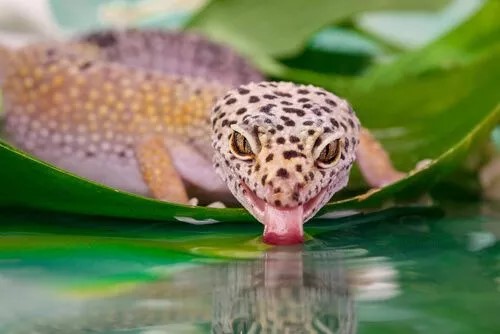
Anoles
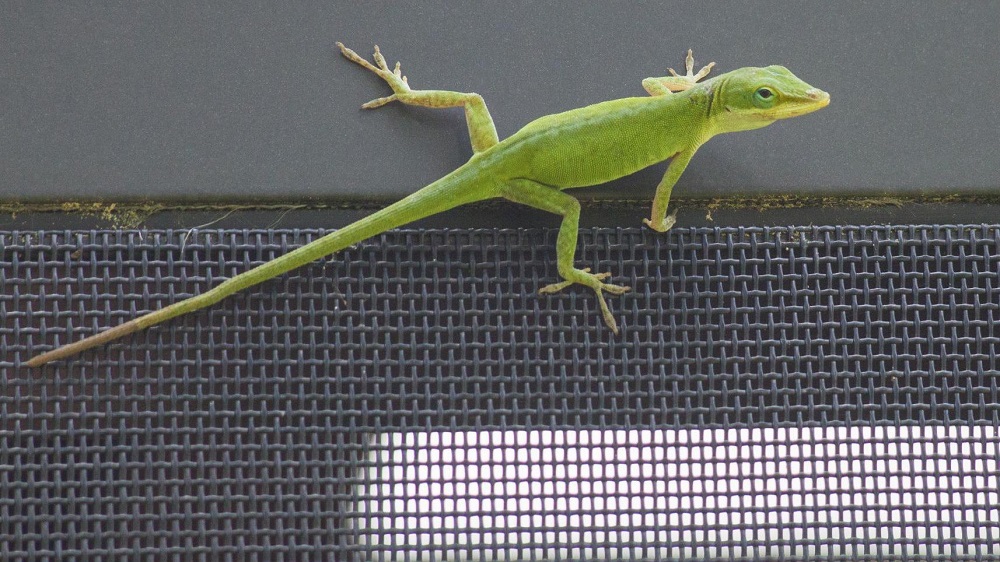
House Gecko
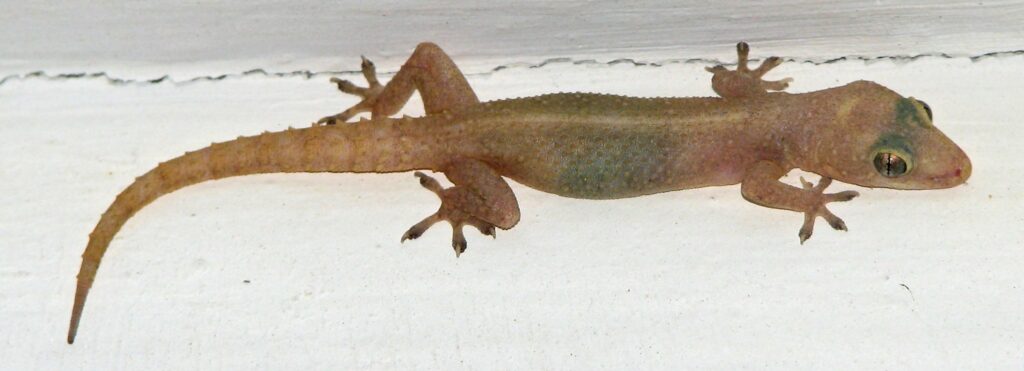
Insectivore garden lizards would feed on insects available in your garden. They can be a predator for the pests in your garden. However, they may also eat beneficial insects.
Here are the common insects that garden lizards eat:
- Flies
- Crickets
- Grasshoppers
- Moths
- Roaches
- Mealworms
- Spiders
- Larvae (waxworms, butterworms, and hornworms)
Omnivores
Another group of lizards is omnivores that can eat both meat, fruits, and vegetables.
They need a variation of both insects and edible greens and fruits to keep their health in tip-top shape. Their diet is usually about 10% plant-based foods and 80% to 90% meat from insects and small animals.
Lizards under this category are:
Bearded Dragons
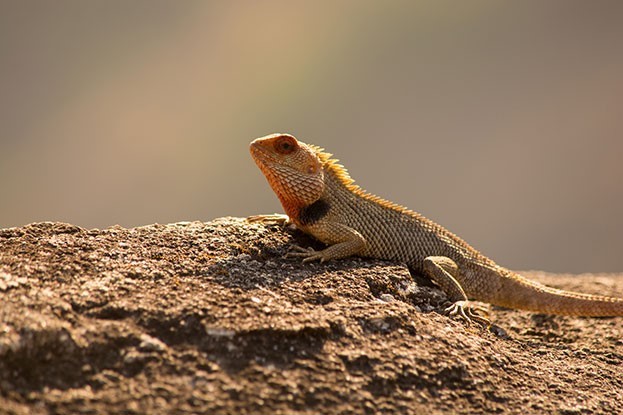
Blue-tongued skinks
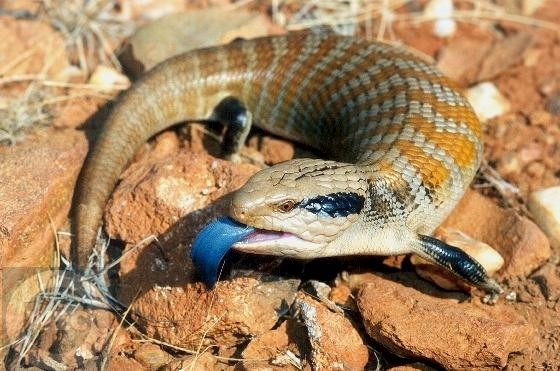
Crested geckos
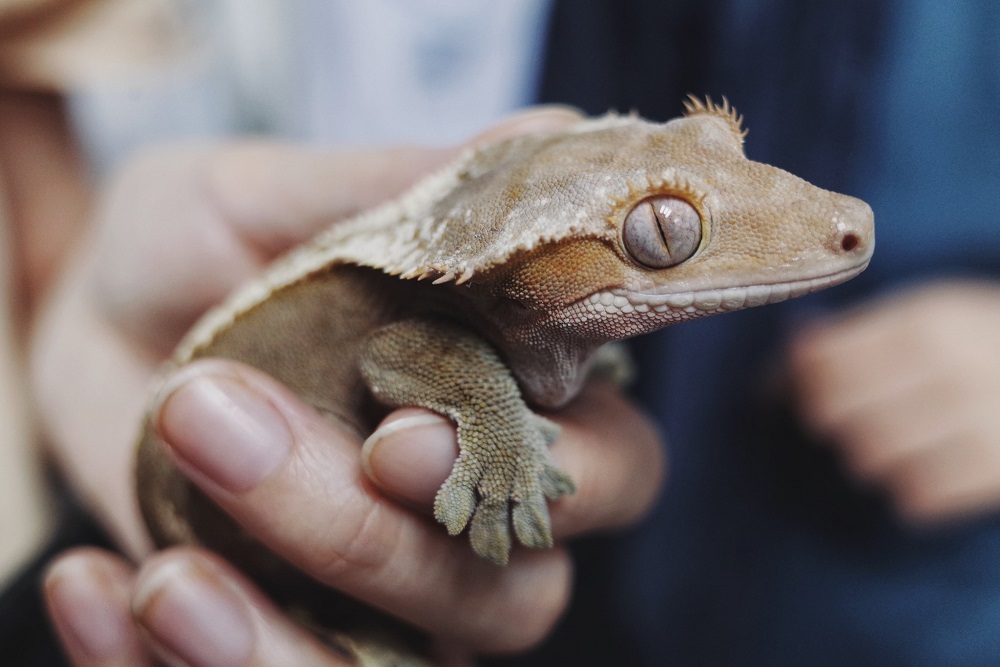
Agama or Spiderman Lizard
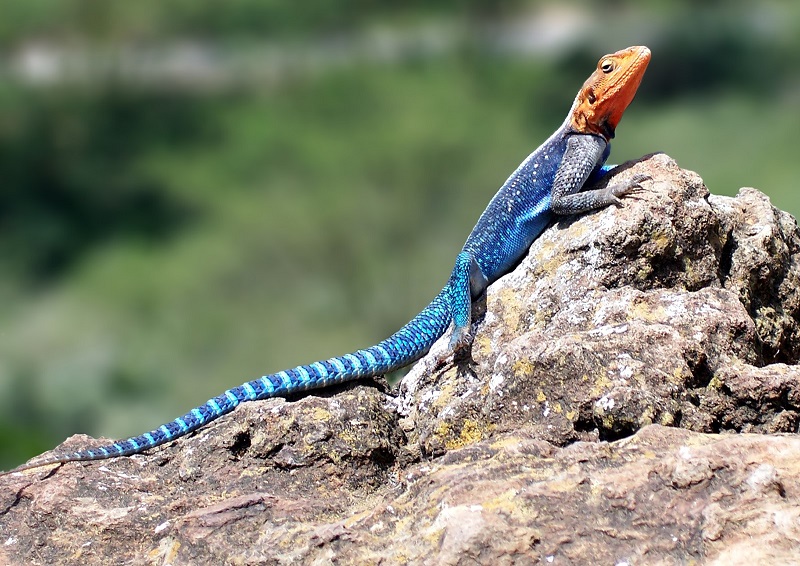
Since omnivore garden lizards have a wider food selection, you can feed them your food in your kitchen. Food variation is key to the proper nutrition of omnivore lizards.
Here are the food options that you can feed to them:
Fruits
- Apples
- Bananas
- Grapes
- Papayas
- Honeydew melon
- Cantaloupe
- Bananas
- Kiwi
- Blueberries
- Raspberries
- Strawberries
- Pears
- Pineapple
- Figs
- Peaches
Vegetables
- Kale
- Peas
- Dandelion greens
- Carrots
- Squash
- Tomatoes
- Sweet potatoes
- Endive
- Bell peppers
- Parsley
- Swiss chard
- Collard greens
- Yams
- Spinach
- Romaine lettuce
Meat
- Small animals
- Eggs
- Insects
- Baby snakes
Carnivores And Herbivores
The minority group in garden lizards belongs to the carnivores and herbivores. Rare species of lizards are exclusively herbivores and some are carnivores.
If you live near a forest or in a rural area, you’re more likely to encounter these rare garden lizards such as:
- Iguana
- Komodo dragon
- Monitor lizards
- Tegus lizards
First, let’s have the best food options for herbivore species of garden lizards like Iguana. These include:
- Collard greens
- Beet greens
- Mustard greens
- Turnip greens
- Alfalfa hay
- Bok choy
- Kale
- Parsley
- Swiss chard
- Romaine
- Kohlrabi
- Escarole
- Dandelion
- Cactus
- Broccoli
- Squash
- Bell peppers
- Green beans
- Sprouts
- Sweet potato
- Parsnips
- Okra
- Cucumber
- Asparagus
- Mushrooms
- Carrots
- Peas
- Corn
For huge and carnivorous lizards like Komodo, tegus, and monitor lizards, the food options would usually include:
- Baby snakes
- Small lizards
- Insects
- Birds
- Rodents
- Monkeys
- Goats
- Wild boars
- Deer
Baby Garden Lizards
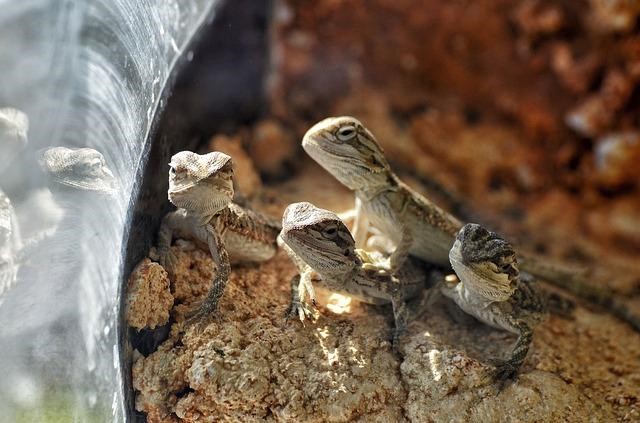
Baby garden lizards get a different treatment when it comes to their diet. Due to their size and underdeveloped hunting skills, you will need to supply them with their food until they’re ready to hunt on their own (3rd month).
Here are the foods that you can prepare for the baby lizards:
Insects
- Fruit flies
- Pinhead crickets
- Bottle fly spikes
Fruits
- Figs
- Tomatoes
- Peaches
- Apples
- Strawberries
- Kiwis
- Plums
- Bananas
- Grapes
Vegetables
- Spinach
- Kale
- Collard Greens
- Broccoli
- Beans
- Carrots
- Squash
- Okra
- Sweet Potatoes
- Zucchini
- Bell Peppers
What Not To Feed Garden Lizards
If dogs are not allowed to eat several types of foods, then lizards would also be the same. Some human foods can cause serious health problems to reptiles and can even cost their lives.
The best practice in feeding garden lizards is to avoid wild-caught insects and fruits. These may contain parasites and toxins that you may not be familiar with.
Other foods that you should not feed to your garden lizards are as follows:
- Chocolate: It contains theobromine that is toxic to animals because of its effects on the nervous system. It serves as a stimulant that overloads the cardiac and nervous systems of reptiles that can lead to death.
- Grains: Rice and other grains contain complex sugars that are not good for your little reptiles. So as much as they want to eat them with you, they are probably mistaking them as grubs. Avoid giving them any form of grains to prevent them from getting sick.
- Bread: Bread and bread crumbs do not contain the nutrition that garden lizards need in their diet. It may also contain complex sugar that their digestive system is not built for. They lack the calcium and other nutrients that will help keep your crawling pets healthy.
- Certain types of insects: Some insects may contain toxins that can make your garden lizards sick. Insects such as fireflies, ticks, butterflies, and caterpillars should not be fed to your pets not only because they may contain toxins but also may affect the ecosystem in your garden.
- Some varieties of fruits and vegetables: The following fruit and vegetables may contain enzymes that the digestive system of lizards cannot handle: juniper berries, avocado, eggplant, garlic, onion, celery, iceberg lettuce, and acorns.
Learning More About Your Garden Lizards
Garden lizards are known for a lot of names such as changeable Lizard, Calotes Versicolor, eastern garden lizard, oriental garden lizard, and geckos.
Though they all pertain to garden lizards they are not the same kind of species. So here are some things that you need to know about your newfound pet.
The Diet of Garden Lizards Every Day As They Grow
Hatchling garden lizards should be fed every day to sustain their development. Baby lizards must be fed in a small feeding bowl at first since they are not yet fit for hunting. You can start changing their diet in the third month.
Here’s a sample meal plan for garden lizards:
- Small species: 2 – 5 small crickets or mealworms
- Larger species: 10 roaches or 20 medium-sized crickets
You Need To Decrease Their Food As They Mature
Baby garden lizards need to eat more frequently to quench their hunger as they mature.
As they turn three-month-old, you can decrease their feeding schedule from daily to 3 times a week or less.
Tips in Feeding Garden Lizards
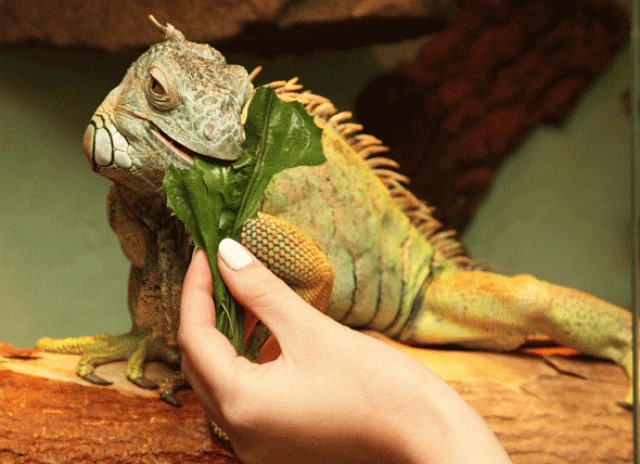
If it’s your first time taking care of a reptile in your garden, here are some tips to help you care for them properly and avoid unintentionally making them sick along the way:
- Garden lizards are prone to choking. So, large pieces of food should be crushed or cut into pieces so they can eat it. The rule of thumb is the food should not be bigger than the space between the lizard’s eyes.
- As much as it is convenient to feed your garden lizard with the same kind of food, it’s not good for them. Give them a different type of insect or food like fruits to achieve a wider range of nutrition for your cute reptiles.
- Lizards would also benefit from vitamins like calcium powder and dust food. Some lizard owners also try to feed their pets with insects that feed on fruits and vegetables to improve the quality of their food.
- Clean the fruits and vegetables thoroughly to remove any pesticide and wax applied to them that can be harmful to your pets. You can use a vinegar solution to rinse the vegetables and fruits to remove any chemical residue.
- When feeding your garden lizard with fruits, make sure to remove the peels, hard seeds, and pits. Most likely give them what you would personally eat to make sure they won’t choke.
- Garden lizards are not good at handling sugar. So, as much as possible avoid feeding them with fruits that are too sweet to prevent any health issues.
- Some types of foods should be given in moderation like romaine lettuce, kale, and spinach. These green leafy vegetables may affect their calcium intake.
- Lizards also need to drink water to keep their skin moisturized. You can leave a bowl of water near their feeding bowl so they can go to it whenever they get thirsty.
Frequently Asked Questions (FAQs)
Can you keep a garden lizard as a pet?
Yes. You can take a garden lizard as a pet. As long as you have an aquarium or a place for it to stay, you can take it as a pet.
However, wild lizards that are found in the forest should not be taken as a pet since they’re not used to the environment. Wild lizards may get too stressed and die if placed in an aquarium.
How do you take care of an outdoor lizard?
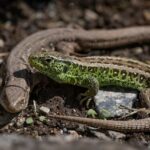
If you see that a lizard has been lounging in your yard and looks like it needs your help, you can take it as a pet.
Here’s what you should do:
- The first thing to do is to prepare its homes such as an aquarium or something that has smooth walls and ventilation.
- Place some water flooring that is easy to replace and a small bowl of water.
- You should also place a piece of a branch so it can move around and make it feel more like it is in its habitat.
- Search about the type of lizard that you got on the Internet and research the best ways to take care of it. Every species of lizard has its lifestyle, feeding patterns, and hunting styles, so what works for other species might be harmful to what you have.
- Contact your local veterinarian to learn more about your new pet.
How often do lizards eat?
Baby lizards have more appetite than adult ones simply because they need more nutrients to grow and develop. They should be fed every day with an adequate amount of food.
In their third month, you can start decreasing their food intake since they have fully matured and even know how to hunt on their own.
Is it good to have lizards in your yard?
Yes and no. Yes, because lizards are your ally in getting rid of pests and keeping the ecosystem in your garden alive.
It’s a no if the lizard in your garden is the carnivorous one that may kill friendly animals in your garden.
What is the easiest lizard to keep as a pet?
While most garden lizards are low maintenance and easy to take as pets, some species stand out the most.
According to Reptile Magazine, the easiest lizard to take care of is the leopard gecko. It is not picky with its food, does not need lighting, and poops on only one side of its tank or cage.
Other good options are as follows:
- Crested gecko
- Blue-tongue skink
- Gold-dust day gecko
- Bearded dragon
Is salt bad for lizards?
Seabirds and reptiles like lizards have a salt gland that allows them to handle high concentrations of salt. Salt baths are also used by pet owners to help clean the skin of reptiles and get rid of deep-seated parasites and bacteria.
Insects and other food sources of lizards also contain salt in them which means it is safe for them.
Are garden lizards dangerous?
Common species of garden lizards are not dangerous. They may be defensive at times and bite their predators but they are not poisonous and carnivorous, unlike other rare species of lizards, such as:
- Gila monster
- Mexican beaded lizard
- Iguana
- Crocodile monitor
- Malayan water monitor
- Komodo dragon
Do garden lizards have teeth?
Yes. Lizards have sharp tiny teeth that allow them to chew on their food. Their teeth are sharp so when a lizard bites, you won’t get much of a wound but they can still pierce your skin.
So when you want to catch a lizard or relocate it to another place, you should have a box and lure it inside with a treat.
What is the lizard’s favorite food?
Most lizards love eating insects. They’re in alert mode once an insect flies around their space.
Bigger species of lizards love deer and pig meat while herbivore types are more into apples and raisins.
Do wild lizards drink water?
Yes. Wild or not, lizards need water to survive. They will occasionally drink so it’s best to place a bowl of water in their tank. Moisture helps keep their skin in tip-top shape and prevents any wounds due to dryness.
Final Thoughts
We hope that this post has helped you figure out what’s for breakfast or dinner for your garden lizards.
They’re pretty simple to feed but you just need to do your homework of finding out what species they belong to. May you successfully befriend your new pet and enjoy taking care of it.
Please don’t forget to share this post whenever someone asks you, what do garden lizards eat?
Thanks for reading and let us know in the comments what kind of lizard you find in your garden.
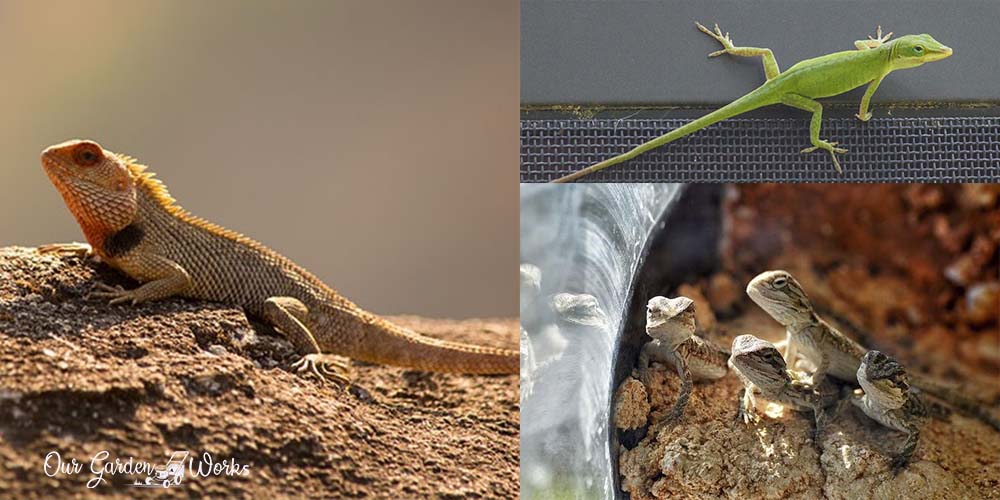
My lizard has lived on my patio for almost 4 years and has never been outside, my problem is finding food to feed her, how long can they go without food, she has had babies the last couple of years and they stay, the males come an visit and than leave, I go and find food under rocks and pots break them down but always the same, help on food ideas.